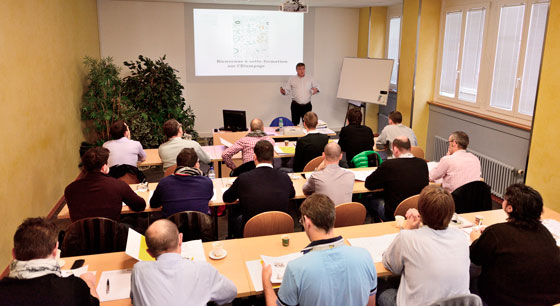
Fondation suisse pour la recherche en microtechnique (Swiss Foundation for Microtechnology Research): the FSRM is in fact better known by its four-letter acronym than by this complete title.
A mere semantic short-cut, a linguistic simplification? Not only. For almost 20 years, the FSRM has been transcending Swiss frontiers as well as extending beyond the microtechnology field, to the extent that the statutes are all that remain of the original Foundation.
The organisation was born in 1978 amid the turmoil experienced by a watch industry upended by the advent of quartz. The Swiss federal government saw the FSRM as a laboratory run by a foundation aimed at supporting microtechnology and its applications. Six years later, this lab was incorporated into the CSEM (Centre Suisse d’électronique et de microtechnique). At the same time, the FSRM was given a major third domain of competency: namely allocating funding to research projects between the CSEM and the Swiss Hautes Ecoles (Universities of Applied Sciences). At that time, the institution already found a pleasing equilibrium between, on the one hand, the development of fundamental microtechnology; and, on the other, direct financial support to the resulting concrete projects.
There was however one particular aspect lacking in this fine balance: the transmission of knowledge. Naturally positioned as the crossroads of microtechnology, the FSRM had across the decades become a platform where researchers, businesses and entrepreneurs rubbed shoulders. It therefore naturally established itself as a meeting place, not only for various professions but also for knowledge.
The FSRM began offering its first courses 25 years ago, in 1993. They were geared towards microtechnology, its core competence. The aim was to offer continuing professional education for engineers and technicians. This niche remains essential, but has since been far exceeded.
The organisation currently offers more than 150 courses in complementary fields such as management, HR, project management, communication, etc.
Why these programme extensions? Because an engineer these days is mobile, not only within his company, but also in terms of his field of activity and sometimes even his geographical location. He must be able to put together a project, share it with his senior management, to convince others and defend the related budget, all the while maintaining a long-term vision of what it will contribute to the company – which has meanwhile become a 4.0 entity!
So what’s next? Just as in 1978, the FSRM keeps its finger on the pulse of the watch industry but is not confined to that role. Like the watch industry itself, it explores materials such as ceramics, by helping students become aware of usage beyond watches alone (construction, protection, civilian or military industries, etc.). It invites manufacturers to practice LEAN Management, to reflect on reliability; it deals with the internet of things and even neuroscience. The fifth decade of the FSRM will definitely not be about a single form of cognition, but rather multiple expressions of knowledge!
April 05, 2018


 News
News